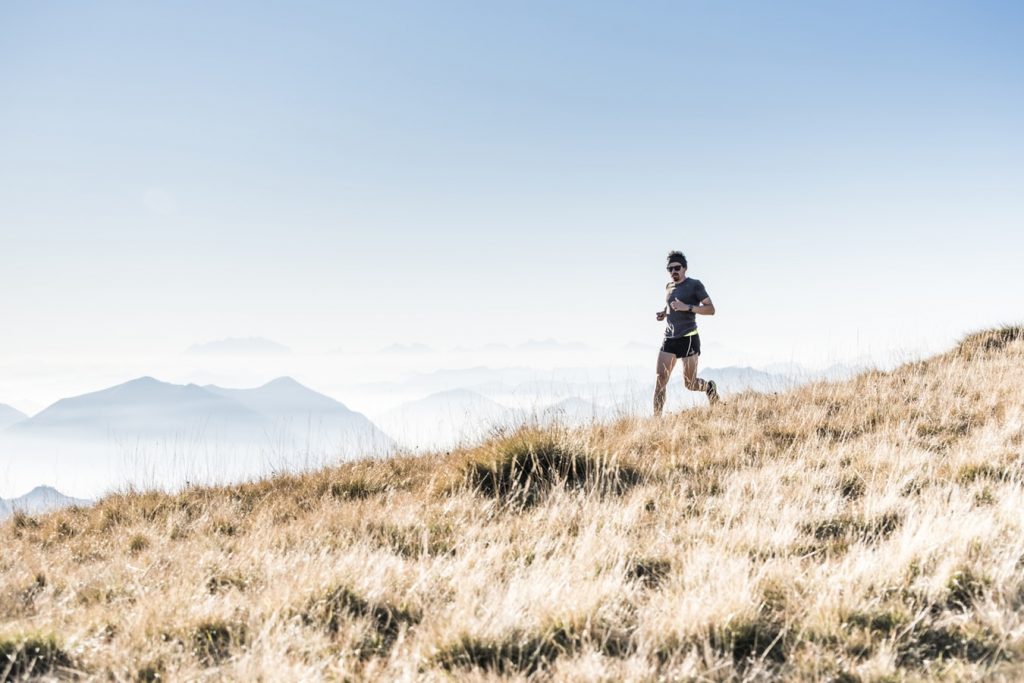When it comes to choosing a trail running backpack, there are a lot of options to consider. Whether you’re planning your first major run, or you’re ready to become a Forest Ranger, here are some things you might not have thought about in terms of getting the best running backpack.

Trail Running Backpack Tip #1: Capacity
The first thing you want to think about in regards to your backpack is how much you need to carry. This really depends on how far you’re going, and how long you want to be out.
You always want to carry snacks, a first aid kit, and water, of course, but if you’re planning a longer trip, you might also want to consider a change of clothes, and some layers in case of changing temperatures throughout the day (or on the second or third day, for a weekend trip).
The most important thing for me is being able to reach everything I need quickly, so I don’t have to stop. Whether that’s a water bottle, or my cell phone to snap a quick pic of an amazing view, the last thing I need is to have to take the pack off and go digging.
If I want to go on a treasure hunt, I’ll go looking for the Holy Grail, Indiana Jones style. Until then, I want all my gear accessible!
Trail Running Backpack Tip #2: Weather

Anyone who spends a lot of time outdoors knows to account for the weather, but your trail running backpack has to be able to accommodate it, too. Personally, I am not going to let a little bit of wrath from Mother Nature stop me from running, so I want to make sure my running backpack is waterproof.
And while I may not hit the trails when the weather is below freezing, I don’t want to lose the entire winter every year, so I prefer a running backpack that’s a little sturdier. Still, if you’re running on Tatooine, you might want to take a look at the Salomon Trail 20 Backpack.
- Lightweight - Lightweight piece for maximum comfort.
- Water resistant - Water resistant fabric protects belongings.
- Hydration Access - Quick access to hydration for convenience.
- 3D Airmesh Shoulder Straps - For greater air circulation.
- Adjustable Straps - At the top and side can be tightened when bag is half full in order to reduce space.
Trail Running Backpack Tip #3: Hydration
Ok, we all know the most important thing about any kind of exercise is to keep yourself hydrated! There are a lot of options here, but it really depends on how far you’re planning to go. I use this handy scale to determine how much water to carry.
- 34-50 ounces (1L or 1.5L) for short distances or commuters
- 68 ounces (2L) for half-marathons (a good balance for weight vs hydration needs)
- 102 ounces (3L) for full marathons or long distance trail running
Keep in mind that 1L of water weighs about 2 lbs. So, if you’re planning on a longer trip, you might want to look into available water sources on your route, and consider carrying a portable filter for refilling on the way.
Of course, if you plan on doing a lot of trail running, it might be best to just get a hydration pack.
Trail Running Backpack Tip #4: Bounce Factor
Another major consideration for a running backpack is what I like to call the Bounce Factor. This means how many bruises I’m going to have on my back when I get home. Target amount: 0. Which means, make sure your pack has adjustable straps!
Like a new pair of shoes, it will take a couple of runs for you to break in your new pack, and you want to be able to adjust your straps midway through a run, or after you’ve been running for a few months and finally reached your target weight!
Of course, for serious trail runners with a lot of supplies, no amount of adjustment is going to create the coveted Zero Bounce Factor, so try and find one with a waist strap, like this backpack. This makes the pack much more secure and can bring you from a Bounce Factor 5 to a 1 almost by itself.
Trail Running Backpack Tip #5: Multi-Purpose
If you live in a city, you might not be able to get out to the trails every day, or even every week. But of course, you still want to keep up your stamina so you can get the most out of your runs when you do get the chance.
I live about two miles away from my work, so on clear days, I will run to work. Which means I need to bring my tablet (among other things), as well as a change of clothes because running in business-casual is not fun. Neither is working in a sweaty shirt.
Mercifully, my pack doubles as a briefcase, so I can carry everything I need for any circumstance.
Trail Running Backpack Tip #6: Weight
As we already discussed, water is heavy. Not to mention everything else you’re going to be carrying in that pack. So you really don’t want to add any unnecessary weight from the pack itself.
Try to keep the pack itself under one pound, especially if you’re running in hotter or more humid climates, where every extra ounce can feel smothering. Basically, anything labeled “Ultralight” is a good start.
Trail Running Backpack Tip #7: Safety First!

Above all, please be safe! Most backpacks come with some reflective straps, so for normal trail running, this isn’t a major factor. Still, if you plan on running at night, consider looking for a model with more reflective surfaces.
And for anyone planning on running long distances far away from civilization, you probably already know you might not have cell signal. Take your cell phone, just in case, but make sure you have a safety whistle, and that it’s easily accessible.
If necessary, tie it to your straps – when you’re injured in the middle of nowhere is definitely not the time for a treasure hunt!

Leave a Reply